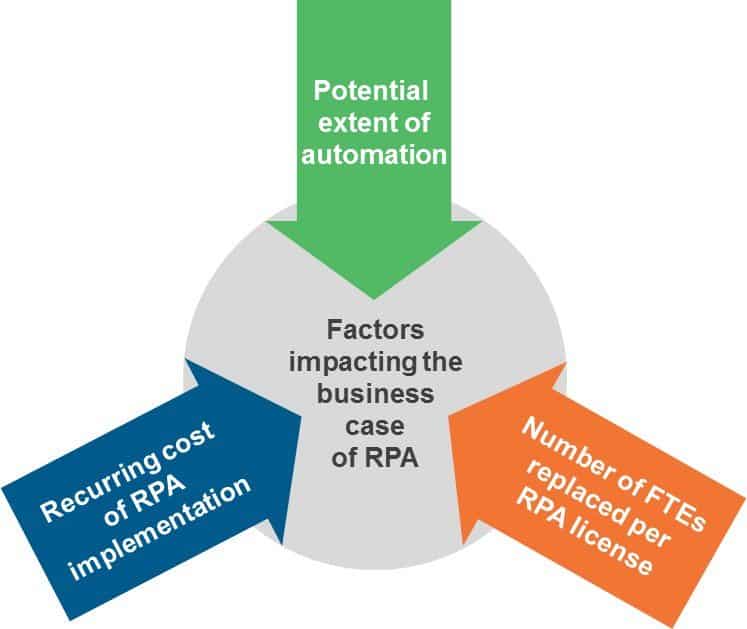
With increasing pressure on Global In-house Centers (GICs) for additional value creation, and exhaustion of traditional means, Robotics Process Automation (RPA) – an automation technology that can handle rules-based and repetitive tasks without human intervention – is fast emerging as the key lever to drive productivity.
RPA has the potential to reduce GIC headcount by 25-45 percent, depending upon the process type and extent of deployment. This results in significant cost savings for the GIC, including salaries and benefits for delivery team members replaced by the software bots, and non-people costs such as facilities, technology, and other operating expenses. Typical offshore GICs supporting horizontal functions such as F&A from Tier-1 Indian locations are likely to witness cost savings of 20-25 percent through RPA.
Beyond cost savings, RPA provides improved service delivery in the form of process quality, speed, and scalability, and better ability to manage through improved governance, security, and business continuity.
Development of an RPA solution requires substantially less time than comparable technologies such as Enterprise Application Integration (EAI) and BPM workflow solutions. This, in turn, reduces the time for RPA implementation and value realization, and offers quick return on investment, typically only six to nine months to recover the initial investments. Further, RPA is typically deployed in a phased manner. The relatively short payback period for initial investment in RPA mean subsequent phases can become self-funded from the savings realized from the earlier implementation.
GICs typically consider a minimum of 15 percent cost savings when developing an RPA business case. The savings are dependent on a number of factors, which can be adjusted suitably to build a favorable business case. Highlighted below are the key factors impacting the business case.

Potential extent of automation
Headcount reduction due to RPA varies with the potential extent of automation that can be achieved, which in turn impacts the cost savings. As RPA’s sweet spot is transactional/rules-based processes, there is considerable potential for headcount reduction and cost savings when it is deployed to handle these processes.
Number of FTEs replaced per RPA license
The number of FTEs that can be replaced per robot varies by the process and type of RPA solution. The higher the number of FTEs replaced, the greater the cost savings. Both, the number of FTEs replaced per robot and the cost savings, can be increased by targeting standard transactional processes with significant volume.
Recurring cost of RPA implementation
Recurring costs for RPA – such as licensing, hosting, and monitoring – vary significantly by vendor and type of solution, in turn impacting the cost savings. The lower the recurring costs, the higher the cost savings.
For more drill-down details, please refer to Everest Group’s report, Business Case for Robotic Process Automation (RPA) in Global In-house Centers (GICs). This report assesses the business case for adoption of RPA in offshore GICs, with information on cost savings across individual components and the associated payback period. It also analyzes the impact of change in the above factors on the business case, and the threshold limits for each in order to have a justifiable business case. Further, it includes case studies on GICs that have adopted RPA, along with key learnings and implications.










